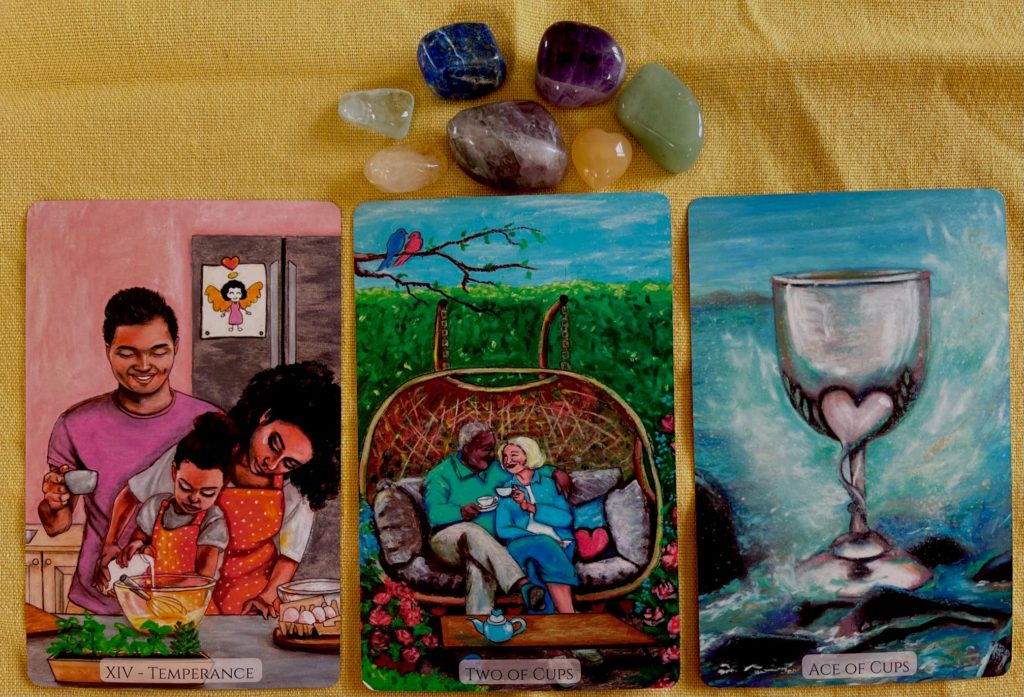
Although the one-card pull reveals a wealth of information, there are times when you want to know more. How did I get here? What exactly is going on? What should I do next?
When you’re going to pull more than one card, the first step is to determine your questions and the position they will occupy. Past, present, future is an easy example. You’re going to lay these cards out left to right. Or the current situation, the obstacle you’re facing, and the cards’ advice.
Think about the situation as you shuffle. Try to be as concise as possible. Vague questions invite vague answers. Tackle one situation at a time. Don’t ask, “What is the probable outcome if I get married and I move to Martinique and I buy a house?” That’s way too much for one spread. The cards won’t know what to make of it and you’ll likely get an answer that makes no sense.
I like to cut the deck and take the top three cards, but again, there is no wrong way to shuffle and pull.
Here are some spreads I find useful:
What should I start doing? What should I stop doing? What should I continue doing?
Option 1, option 2, what you need to know to make a good decision
Opportunities, weaknesses, advice
You, the other person, the relationship
What you want from the relationship, what the other person wants, where it’s headed
What brings you together, what pulls you apart, what needs your attention
What you have, what you want, how to get there
What’s keeping you stuck, what to release, what to cultivate
And, of course, you can always come up with your own.
Tip: Refrain from asking the same question repeatedly. Ask once. Give it time to play out. If, in a few months, the situation still seems up in the air, review the cards you pulled. Tweak the questions in your spread if you feel they need fine-tuning. But resist the urge to continually ask the same question.
Next week we’ll look at some questions that you shouldn’t ask the cards.
